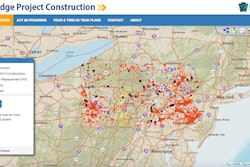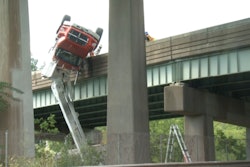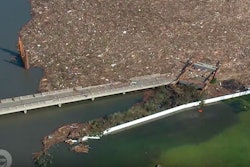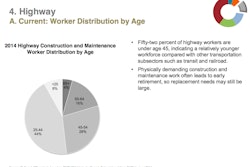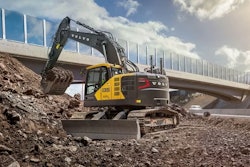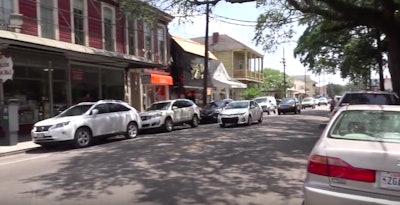 Magazine Street following post-Katrina improvements
Magazine Street following post-Katrina improvementsThe final two Louisiana Department of Transportation and Development (LDOTD) videos commemorating the 10th anniversary of Hurricane Katrina highlight the road rebuilding efforts in Orleans and Jefferson Parishes, and the hard work of department employees immediately following the storm.
In “Paths to Progress Rebuilding Orleans and Jefferson Parishes,” LDOTD Secretary Sherri LeBas describes the improvements made to 116 street segments in the two parishes.
“We made the streets better by striping bicycle lanes where appropriate, rehabilitating some sidewalks within the area, and even the small details such as replacing the tiles on the corners of the streets here in this area,” LeBas says. “It was so important to get the infrastructure back up to par for the quality of life of the people and the citizens of this area. It was a true rebuilding effort of this city. And having a sound infrastructure is the key to the rebuilding effort.”
Sam Farnet, past president of the Magazine Street Merchants Association, one of the areas impacted, said LDOTD worked with merchants in the area when planned the work there.
“They basically took the concerns we had about the merchants – customers, deliveries, all those sorts of things that affect the businesses, traffic flow – and they took it into account when they planned the project,” Farnet says. “Our goal from the beginning was to ask the merchants to cooperate with the contractors. Most of the problems that we did encounter were solved quickly. They accommodated not only the merchants but the customers along the streets, so it went pretty well.”
In “The Human Element The Best in All of Us,” LeBas, as well as Vince Latino, LDOTD chief maintenance engineer and Mike Stack, former District 2 administrator, discussed the hard work and sacrifices department employees made in jumping to action where needed after Katrina’s destruction.
“We immediately set up a call center at the DOTD headquarters and my first experience with the devastation were phone calls that I received from people who had loved ones who were in New Orleans and they could not get in touch with their loved ones,” LeBas says. “I also received a call from someone who was stranded on top of a roof. So we worked really hard to connect them to the right emergency response people that could give them aid. The employees across the state came to the aid of south Louisiana, through physically coming down here and helping with debris removal, inspection, repair of signals to where the district was flooded with outpour of help from other DOTD employees.”
Latino says department workers didn’t delay in getting to work, even to the point of sacrificing places to stay while working.
“People that came in would crash just on the floors of offices, some, if somebody’s house was there, would share with other people’s houses,” he says. “Later on in the process we had worked toward getting some temporary housing, some trailers for them and stuff like that for people who didn’t have places to stay. When emergencies happen that’s when you really see the true grit of people and I can tell you that the DOTD employees have that and they have the compassion and they will be here to help their fellow man.”
Stack said he knew Katrina was a life change event for all workers involved.
“It was described as going from the Jetsons to the Flintstones in a matter of minutes,” he says. “I can’t say enough about both DOTD’s actions during the event and after the event and in the years since frankly. Throughout the whole organization whatever we needed, whatever it took, they tried to provide. I was never more proud to be a DTOD (employee) than I was after Katrina, the amount of work that was done since the storm. We set a very high standard.”




